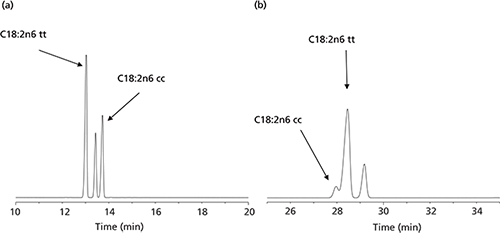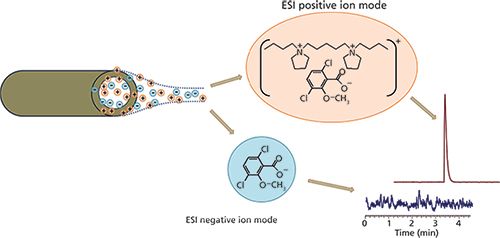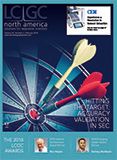Ionic Liquids in Separations and Mass Spectrometry
LCGC North America
In advance of PittconIn advance of Pittcon 2018, leading scientists-Ronald Majors, Richard Henry, John W. Dolan, Zachary S. Breitbach, and Daniel W. Armstrong-who will be speaking at the LCGC awards symposium give us a preview of their talks.
Room-temperature ionic liquids (RTILs) are a class of nonmolecular ionic solvents with low melting points. The most common RTILs are composed of unsymmetrically substituted nitrogen-containing cations (for example, imidazolium, pyrrolidinium, pyridinium, or phosphonium) with inorganic anions (such as Cl-, PF6-, and BF4-). Most of these more common ILs are of limited use analytically. Consequently, many ILs consisting of multiple linked cations and less-reactive or more-stable anions have been synthesized to provide specific desired properties. In this presentation, an overview of the structure and properties of ILs and examples of their expanding use in various applications of separations, chromatography, and mass spectrometry (MS) are provided.
Analytical uses of RTILs include
- Novel solvents in organic synthesis and liquid–liquid extraction
- Stationary phases in gas chromatography (GC) and liquid chromatography (LC)
- Headspace solvents
- Additive for electrospray ionization (ESI)-MS analysis of anions
- Matrixes in matrix-assisted laser desorption–ionization (MALDI) MS
- Sensors
- Electrowetting/micro total analysis systems (TAS)
Several studies have shown the superior capabilities of ILs as GC stationary phases. These include higher thermal stabilities, greater polarity range, and unusual selectivities. (See Figure 1 on cis–trans isomer separation.) ILs have a dual nature selectivity in that they are able to separate polar molecules like a polar stationary phase and nonpolar molar molecules like nonpolar stationary phases. They are increasingly being used in a variety of applications, including two-dimensional (2D)-GC, the measurement of water in samples, solvents, and materials, and compact field GC units.

Figure 1: GC–FID analysis of C18:2n6 cis and trans FAME isomers at 180 °C using (a) SLB-IL60 and (b) PEG stationary phases.
Ionic liquids have proven to be the best MALDI-MS matrices for a variety of applications and, unlike any solid matrix, quantitative results can be obtained. Further, the dications, trications, and tetracations developed for high stability ILs can be put in their fluoride ion form for another novel MS use-that is, their use as ESI-MS reagents for the ultrasensitive detection of anions in the positive mode. This technique is known as paired ion electrospray ionization–mass spectrometry (PIESI-MS). (See Figure 2 for a PIESI example.)

Figure 2: Paired ion electrospray ionization (PIESI)-MS for the highly sensitive determination of acidic herbicides and pesticides in water in the positive mode.
References
(1) J.L. Anderson, J. Ding, T. Welton, and D.W. Armstrong, J. Am. Chem. Soc. 124, 14247–14254 (2002).
(2) J.L. Anderson, R. Ding, A. Ellern, and D.W. Armstrong, J. Am. Chem. Soc. 127(2), 593–604 (2005).
(3) M. Qi and D.W. Armstrong, Anal. Bioanal. Chem. 388, 889–899 (2007).
(4) X. Han and D.W. Armstrong, Acc. Chem. Res. 40, 1079–1086 (2007).
(5) J.V. Seeley, S.K. Seeley, E.K. Libby, Z.S. Breitbach, and D.W. Armstrong, Anal. Bioanal. Chem. 390, 323–332 (2008).
(6) T. Payagala and D.W. Armstrong, Chirality 24, 17–53 (2012).
(7) D.W. Armstrong, L.-K. Zhang, L. He, and M. Gross, Anal. Chem. 73, 3679–3686 (2001).
(8) R.J. Soukup-Hein, J.W. Remsburg, P.K. Dasgupta, and D.W. Armstrong, Anal. Chem. 79, 7348–7352 (2007).
Daniel W. Armstrong

Daniel W. Armstrong is the Robert A. Welch Distinguished Professor in the Department of Chemistry and Biochemistry at The University of Texas at Arlington in Arlington, Texas.

New Method Explored for the Detection of CECs in Crops Irrigated with Contaminated Water
April 30th 2025This new study presents a validated QuEChERS–LC-MS/MS method for detecting eight persistent, mobile, and toxic substances in escarole, tomatoes, and tomato leaves irrigated with contaminated water.

.png&w=3840&q=75)

.png&w=3840&q=75)



.png&w=3840&q=75)



.png&w=3840&q=75)













